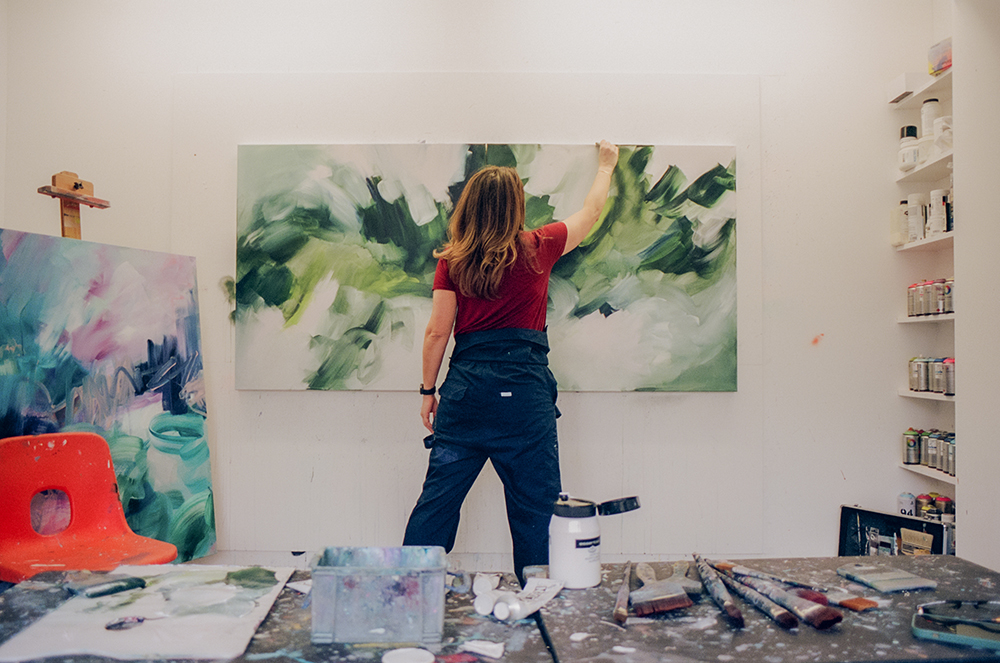
5 minute read
Why does the art world have such a gender pay gap problem?
by artiqannual
Marketplace misogyny or unconscious cooperation? Artiq Commercial Director Tazie Taysom on the issue of the gender pay gap in the art world, where artwork made by women is consistently undervalued.
The art industry is often held in high esteem, pioneering change with its progressive values and encouragement of diversity. The 2021/22 report by the Chartered Institute of Personnel and Development (CIPD) found that the sector with the largest gender median pay gap was construction, where female employees received 76p for every £1 earned by a man.
Advertisement
In comparison, the industries found to hold the smallest gender pay gap were the arts, entertainment and recreation. Despite this, the art world still has an undisputable gender pay gap problem. Work by female artists continues to sell for a fraction of the price received for comparable works by male artists. The artist, academic and author of Women Can’t Paint, Dr Helen Gorrill, studied the selling prices of 5,000 paintings and found that for every £1 a male artist earns for his work, a woman earns a mere 10p. Likewise, a review of recent auction prices shows a clear disparity between record figures for male and female artists. In 2019, Jeff Koons’ Rabbit sold for a cool $91m (£78m), compared to the sale of Jenny Saville’s Propped at $12.4m only the year before. It’s even been found that when men sign an artwork, it increases in value but when a woman does the same, the work decreases in value.
Last year in the Netherlands, researchers studying gendered pricing bias in artwork conducted a project in which they presented a computer-generated artwork and asked study participants to provide a rating based on how much they liked the painting. One half of the participants saw a female name listed as the artist and the other half, saw a male name. Despite all participants seeing the same painting, higher ratings were given by participants who saw the male name linked to the piece. Why is women’s artwork consistently devalued? In a recent interview with Sky News Arts & Entertainment reporter Bethany Minelle, contemporary artist Joanna Gilbert said there is simply no reason for such a discrepancy:

Contemporary artist Joanna Gilbert in her North London studio.
There is clearly a stigma towards female artists and devaluation of artwork produced by women. The sector needs to actively work towards change to continue the important work of championing gender and sexual diversity within the art world. Diversity is vital to creating a vibrant, innovative and thriving arts sector.
Progress has already been made. For instance, the annual Art Basel and UBS survey found that female artists now make up 40 per cent of private collections, up from 33 per cent in 2018. Further to this, in a recent BBC Radio 4 broadcast, “Recalculating Art”, featuring curators and experts from across the industry, it was established that secondary market prices for pieces by female artists are now rising 29 per cent faster than the prices for art by male artists.
Representation and the championing of women artists is being demanded by audiences in the UK and beyond, and this is an exciting moment of change; all stakeholders across the industry must support women artists, including institutions, museums, galleries and corporates alike.
Change is happening, but we cannot afford to lose momentum on addressing the gender pay disparity across the industry. There also needs to be more support for female artists to remain active in the art world throughout their careers. As in many other industries, pregnancy bias exists, and we have a responsibility to support pregnant and child-rearing artists, putting provisions in place to ease their transition back into part-time or full-time careers. Flexibility and a broadening wealth of options to capitalise on their practice help to provide women artists with viable options to increase their financial security, and there has been a surge in demand for leased art collections, which allow artists to make an income on their works while still remaining in full ownership of them.
The gender pay gap is an issue across all industries. In the art world, women have long been excluded; from the modesty inspired exclusion from life-drawing rooms in the 1700s to a lack of equal representation in galleries even now. Change is needed in the industry, and it’s time to recognise that some of the most pivotal contributions made to the sector have been by women.
Artists of the 20th Century, curated by Camille Morineau, highlighted women pioneers of modern art.
Progress is happening; this year the four shortlisted artists for the Turner Prize are all women, and Frieze’s Spotlight 2022 Women
Working towards actively fixing the gender disparity crisis in the art world is vital to encourage the next generation of talent. Seeing is believing; representation, visibility and financial support are critical to the success of the industry.
Tazie Taysom, Commercial Director
This is an excerpt from an article originally published in The Independent.










